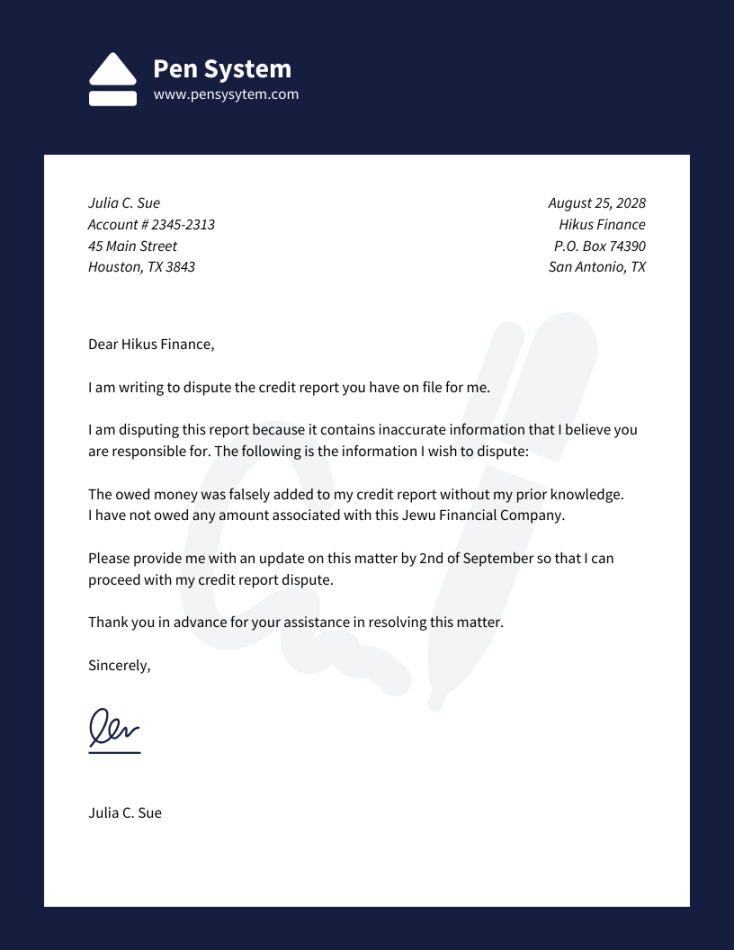A Dispute Letter to Creditor is a formal document that is sent to a creditor to dispute a charge or debt that is believed to be incorrect or unfair. This letter is a crucial tool for individuals and businesses to protect their financial interests and resolve disputes efficiently.
Key Components of a Dispute Letter to Creditor

1. Your Contact Information: Place your name, address, phone number, and email address at the top of the letter. This information should be clearly visible and easy to read.
2. Creditor’s Contact Information: Include the creditor’s name, address, phone number, and account number in the salutation or below it. This ensures that the letter is delivered to the correct recipient.
3. Date: The date should be written in a clear and consistent format, such as “September 30, 2024.”
4. Subject Line: Use a concise and informative subject line that clearly states the purpose of the letter, such as “Dispute of Charge for [Account Number].”
5. Salutation: Begin the letter with a formal salutation, such as “Dear [Creditor’s Name],” or “To Whom It May Concern.”
6. Body Paragraphs: The body of the letter should clearly and concisely outline the details of the disputed charge or debt. Include the following information:
Date of the transaction: Specify the exact date when the disputed charge was incurred.
7. Closing: End the letter with a polite closing, such as “Sincerely,” or “Thank you for your prompt attention to this matter.”
8. Signature: Sign the letter below the closing.
Design Elements for Professionalism and Trust
Font: Choose a professional and legible font, such as Arial, Times New Roman, or Calibri.
Example Dispute Letter to Creditor
September 30, 2024
[Creditor’s Name]
[Creditor’s Address]
[Creditor’s City, State, ZIP]
Dear [Creditor’s Name],
I am writing to dispute a charge of [Amount] that appears on my account statement dated [Date]. The charge is for [Description of charge].
I believe this charge is incorrect because [Reason for dispute]. I have attached a copy of [Supporting document] to support my claim.
I request that you investigate this matter and issue a credit to my account for the disputed amount. Please contact me at [Your phone number] or [Your email address] if you require any further information.
Thank you for your prompt attention to this matter.
Sincerely,
[Your Name]
[Your Address]
[Your City, State, ZIP]
By following these guidelines, you can create a professional and effective Dispute Letter to Creditor that clearly outlines your concerns and increases your chances of a successful resolution.